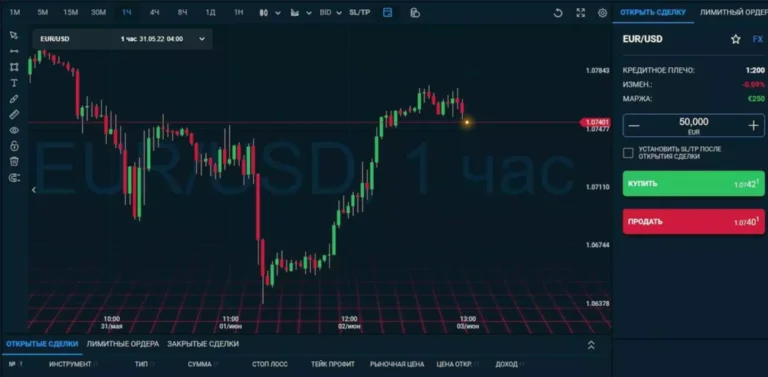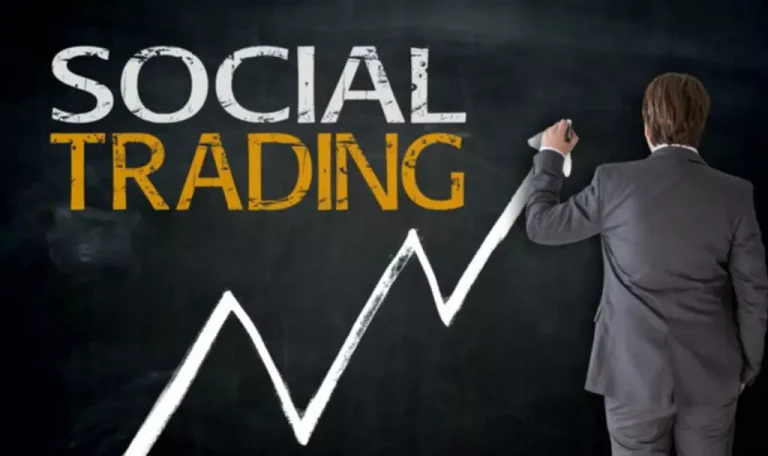And even small commissions can add up over multiple buy orders unless your brokerage does not charge commissions. A big factor in buying and selling an ETF, a inventory, or anything that’s traded publicly is liquidity. Liquidity means that if you purchase one thing, there is enough buying and selling interest that it is possible for you to to get out of it comparatively rapidly without shifting the price. Note, nonetheless, that you may still pay a hidden fee within the form of fee for order flow (PFOF). This controversial practice routes your orders to a selected counterparty rather than having the market compete for your order at one of the best price possible.

Therefore, the composition of the basket is critical in determining the ETF’s asset class exposure. Investors often choose ETFs with higher trading volumes and frequencies, because it supplies them with a broader pool of potential counterparties and reduces the chance of going through challenges in executing trades. For instance, if an investor wants to sell a significant variety of shares of an ETF with low buying and selling quantity and rare trades, they could wrestle to find patrons and may have to just accept a lower price to attract interest. On the opposite hand, an ETF with high trading quantity and frequent trades would doubtless offer a smoother and more environment friendly buying and selling experience.
However, extreme rebalancing also can lead to greater buying and selling costs and wider bid-ask spreads, negatively impacting liquidity. ETFs could be structured as either open-end funds or unit funding trusts (UITs). This is as a result of open-end funds can use in-kind redemptions, which allow the fund to change securities with approved members without producing taxable events. UITs, then again, should promote securities to meet redemption requests, which may trigger taxable occasions.
The unfold may be influenced by the liquidity of the underlying belongings and the efficiency of the market-making course of. It’s important to consider the overall liquidity profile, including main and secondary market liquidity, rather than relying exclusively on the bid-ask unfold. By addressing these features, the ETF market can further evolve, providing traders with elevated liquidity, tighter spreads, and improved market effectivity.

ETFs have turn into enormously in style among particular person investors, but there are numerous dangers to consider when shopping for or selling them. Liquidity can limit an investor’s capacity to purchase and sell without influencing the market price in an unfavorable way. In basic, particular person traders should stick to bigger ETFs with high buying and selling volumes and tight spreads to attenuate their risk, while also making sure that the ETF’s holdings aren’t obscure or illiquid securities. Dealers performing as APs can create and redeem ETF shares to fulfill provide and demand modifications within the ETF and maintain its market value consistent with its NAV. On the secondary market, ETF shares with larger buying and selling quantity and tighter spreads are normally extra liquid. ETFs depend on a unique creation and redemption mechanism that provides major market liquidity.
However, the ETF shortly recovered and continued to provide returns comparable to the S&P 500 index. Overall, passive ETFs are typically the preferred possibility for investors looking for market efficiency. Their low expense ratios, combined with their capability to carefully monitor their underlying index, make them a gorgeous choice.
Therefore, the composition of the basket is critical in figuring out the ETF’s regional exposure. If the basket has a better weightage in the course of a particular sector, the ETF’s efficiency shall be influenced by that sector’s efficiency. For instance, if a expertise ETF has a better weightage in the path of software firms and the software program sector experiences a downturn, the ETF’s efficiency shall be negatively impacted. Conversely, if the expertise sector experiences a boom, the ETF’s performance shall be positively impacted. Therefore, the composition of the basket is critical in determining the ETF’s sector exposure. Investors generally prefer ETFs with tighter bid-ask spreads, because it reduces the price of buying and selling and enhances the convenience of coming into or exiting positions.

Some indexes may have more concentration threat, which means that a number of companies or subsectors could dominate the index and drive its efficiency. Investors ought to understand how the underlying index or benchmark of a biotech ETF is constructed and how it aligns with their funding goals and threat tolerance. Market makers are typically giant institutional firms that actively take part in the creation and redemption means of ETF shares. They assist preserve liquidity by constantly offering bid and ask prices for ETF shares, narrowing the bid-ask unfold, and ensuring that there’s a fixed provide of shares available for trading. Understanding the factors that have an effect on ETF tax effectivity is essential for buyers who wish to maximize their after-tax returns. By considering the kinds of securities held throughout the ETF, its turnover price, and its construction, traders can make informed choices and choose tax-efficient ETFs that align with their funding goals.
Active ETFs are actively managed and aim to outperform their benchmark index, while passive ETFs seek to copy the efficiency of a particular index. Passive ETFs generally have decrease expense ratios and are usually extra efficient in phrases of monitoring their underlying index. However, active ETFs could provide the potential for outperformance, albeit with a higher expense ratio. To illustrate the primary and secondary market dynamics, let’s consider an example.

The information contained herein doesn’t describe any product that is supervised or regulated by the National Banking and Insurance Commission (CNBS) in Honduras. This data is confidential, and isn’t to be reproduced or distributed to third parties as this is NOT a public offering of securities in Costa Rica. The product being offered just isn’t intended for the Costa Rican public or market and neither is registered or will be registered before the SUGEVAL, nor could be traded within the secondary market. If any recipient of this documentation receives this doc in El Salvador, such recipient acknowledges that the identical has been delivered upon his request and instructions, and on a private placement foundation. As we have seen all through this evaluation, the position of index rolls in ETF efficiency is a fancy and multifaceted problem. From market conditions to monitoring errors, a number of factors can affect the flexibility of an ETF to precisely track its underlying index throughout roll intervals.
Understanding the role of APs is essential for traders looking for to capitalize on the advantages offered by ETFs and make informed decisions about their investment strategies. There are about 900 ETFs buying and selling available within the market, of which a big number seem like duplicative in design and protection. We suspect that most of the newer funds have low liquidity, asynchronous buying and selling, and wider bid-ask spreads.
Another issue to consider when evaluating an ETF’s efficiency is monitoring error. Tracking error refers to the distinction between an ETF’s performance and the performance of the underlying index it’s designed to trace. While some degree of monitoring error is anticipated, larger levels of tracking error can be a cause for concern.
Biotech ETFs also can have different exposures to numerous segments, subsectors, themes, or factors within the biotech business. For instance, some biotech ETFs may give consideration to particular areas of analysis %KEYWORD_VAR% or growth, such as genomics, immunotherapy, or biosimilars. Other biotech ETFs could target particular characteristics or outcomes of biotech firms, such as development potential, profitability, innovation, or dividend yield.
However, the actual creation and redemption of ETFs takes place on the primary market between the ETF and approved participants. By constantly creating and redeeming shares, these authorized participants meet the provision and demand wants of traders on the secondary markets the place they actually trade. The daily volume traded of an ETF is usually incorrectly used as a reference level for liquidity. An ETF’s liquidity is determined by the liquidity of the underlying securities whereas buying and selling quantity is influenced by the exercise of buyers. If an ETF invests in securities which have limited supply or are troublesome to trade, this will influence the market makers’ ability to create or redeem units of the ETF which may then have an effect on the portfolio’s liquidity. However, most Canadian-listed ETFs predominantly put money into liquid securities that trade on main exchanges around the globe.
Like shares, the worth of an ETF can typically be completely different from that ETF’s underlying worth. This can lead to conditions by which an investor would possibly actually pay a premium above and beyond the value of the underlying shares or commodities in an ETF portfolio simply to purchase that ETF. This is uncommon and is often corrected over time, however it’s necessary to acknowledge as a risk that one takes when shopping for or promoting an ETF. ETFs, like mutual funds, are sometimes lauded for the diversification that they provide investors. However, you will need to observe that simply because an ETF incorporates multiple underlying place doesn’t mean that it is resistant to volatility. Consider a high-dividend ETF experiencing a shift within the dividend-paying landscape.

The demand for these ETFs can be influenced by factors corresponding to market sentiment, economic situations, and investor preferences. For instance, throughout times of financial uncertainty, investors could prefer gold ETFs over silver ETFs, leading to a better ratio. Conversely, if there’s a surge in industrial demand for silver, it may outperform gold ETFs and lead to a decrease ratio. Liquidity refers to the ease with which an ETF can https://www.xcritical.com/ be bought or bought with out significantly impacting its value. Highly liquid ETFs are typically those that observe broad market indices and have high trading volumes. On the other hand, ETFs that monitor niche markets or have low trading volumes may be less liquid and could additionally be subject to wider bid-ask spreads and increased buying and selling prices.
In summary, tracking errors are an necessary consideration for investors looking to make informed selections about their investments in ETFs. While tracking errors may be small, they will add up over time and have a major impact on returns. Understanding how tracking errors are measured and what factors contribute to them might help investors make more informed selections and mitigate the impact of tracking errors on their portfolios.